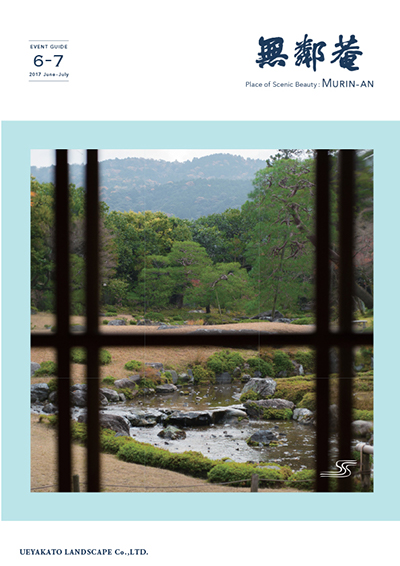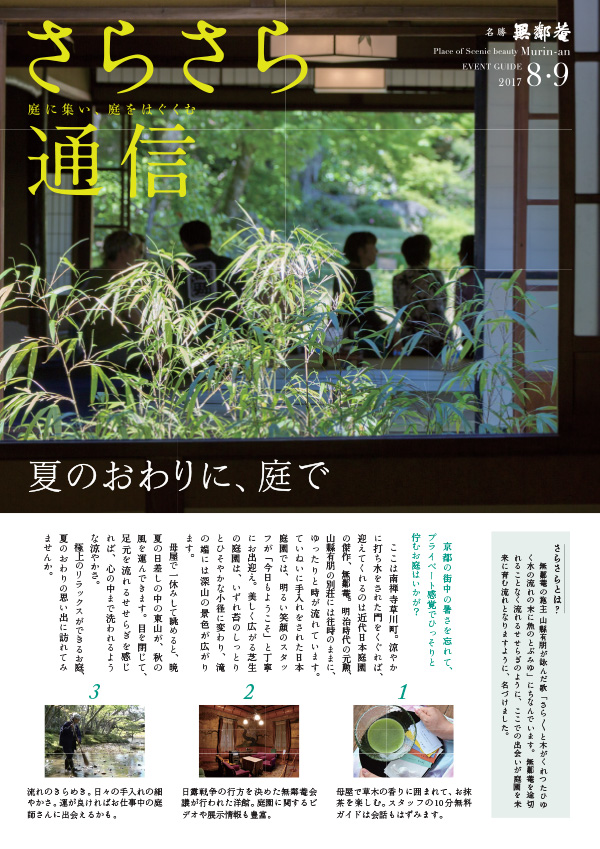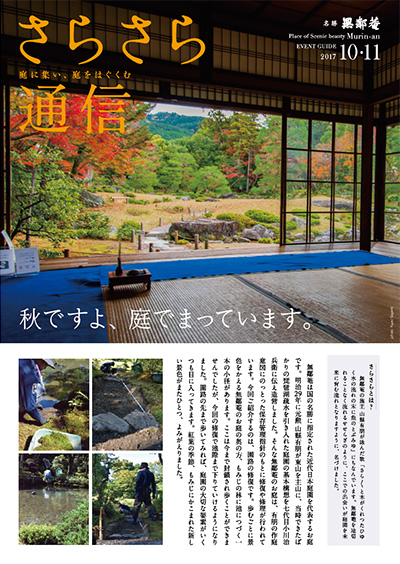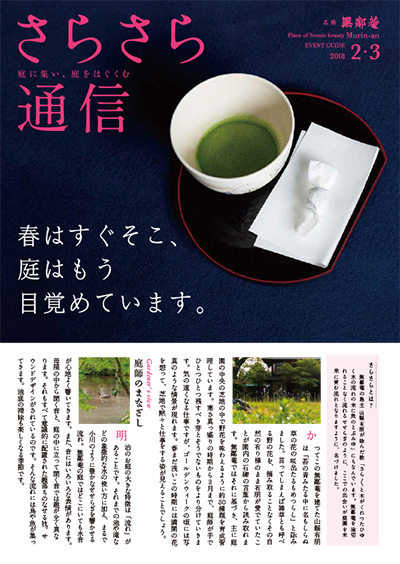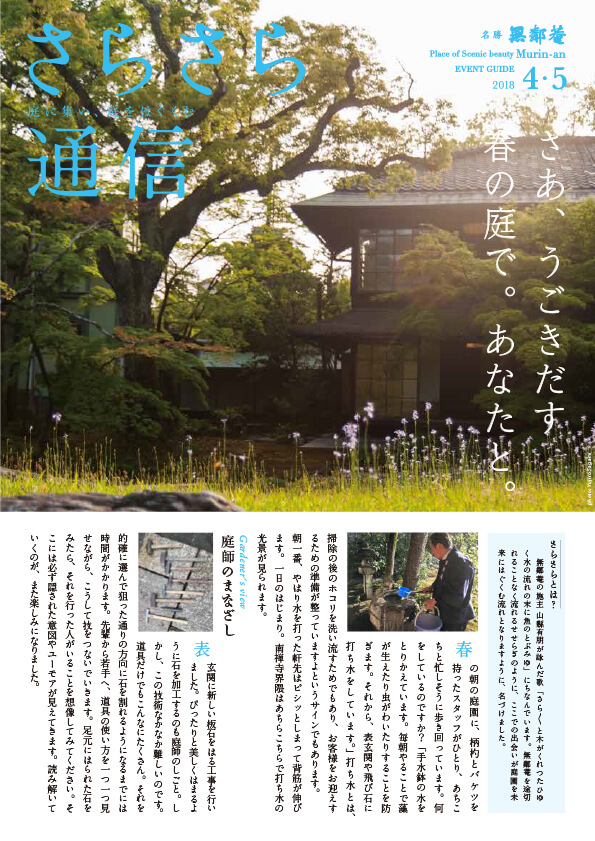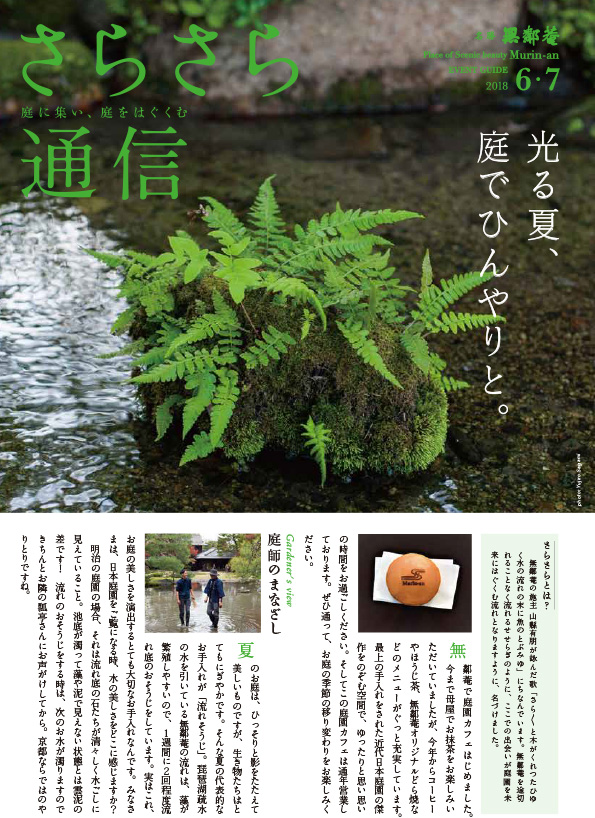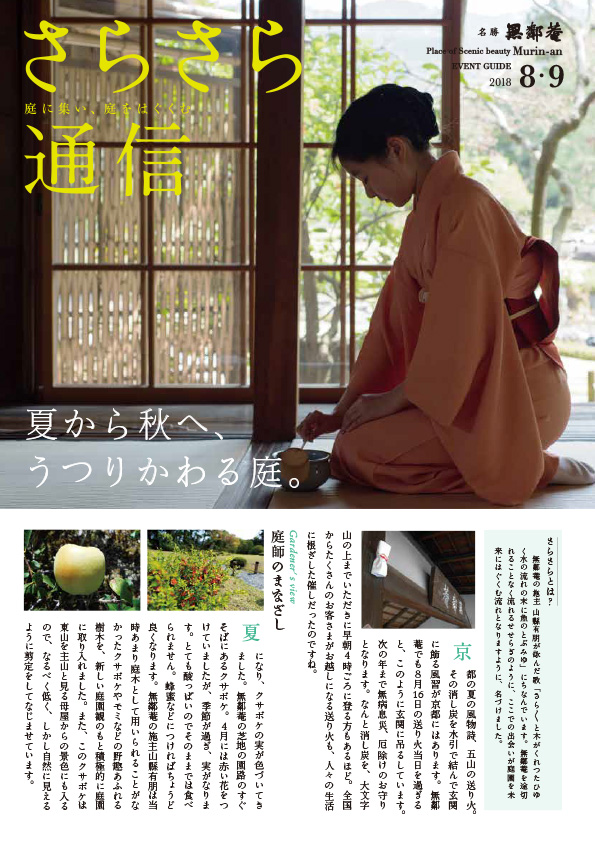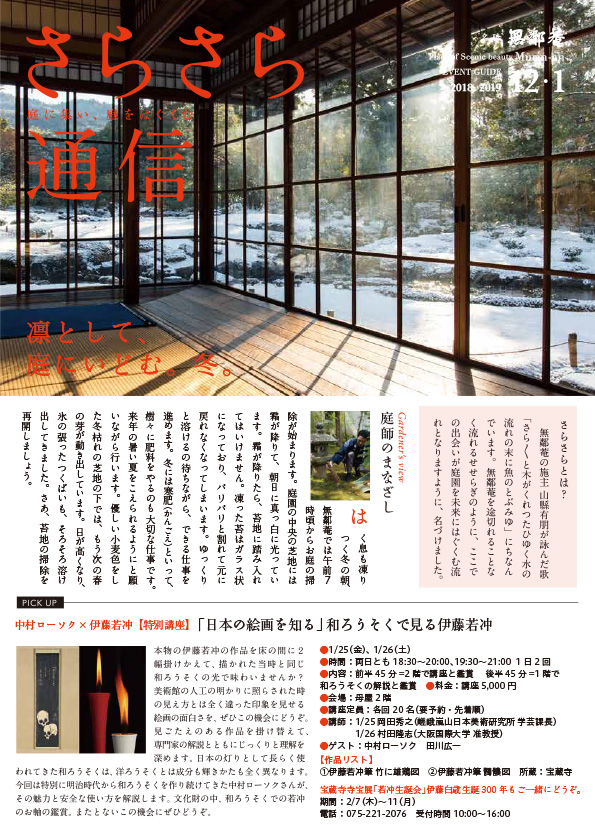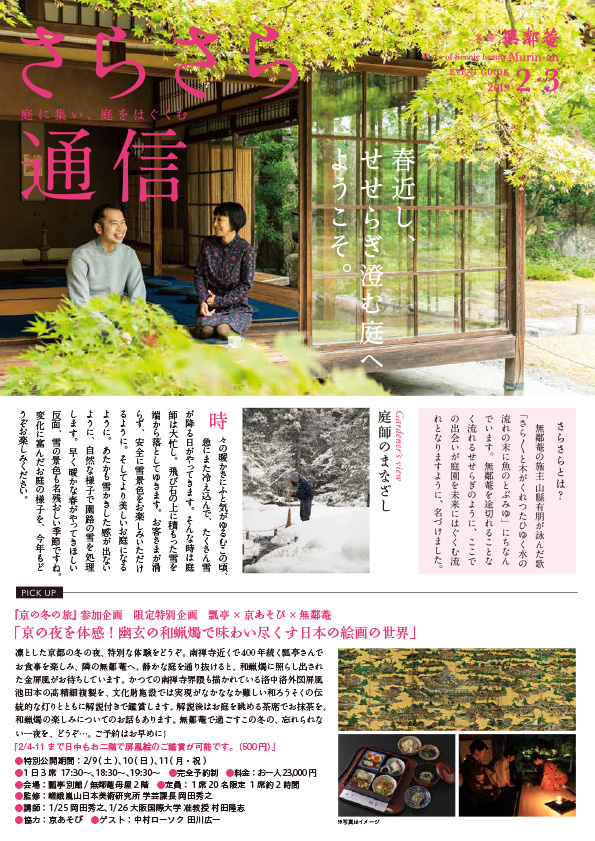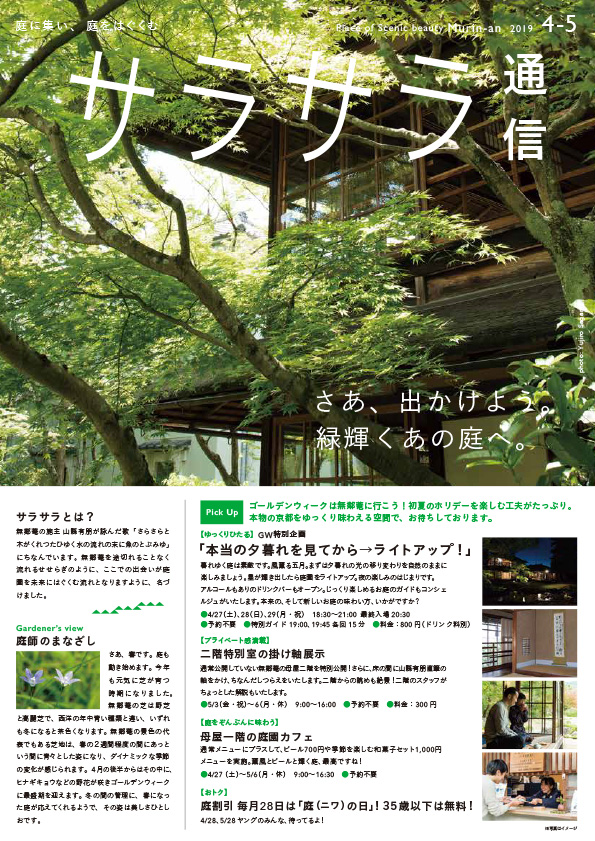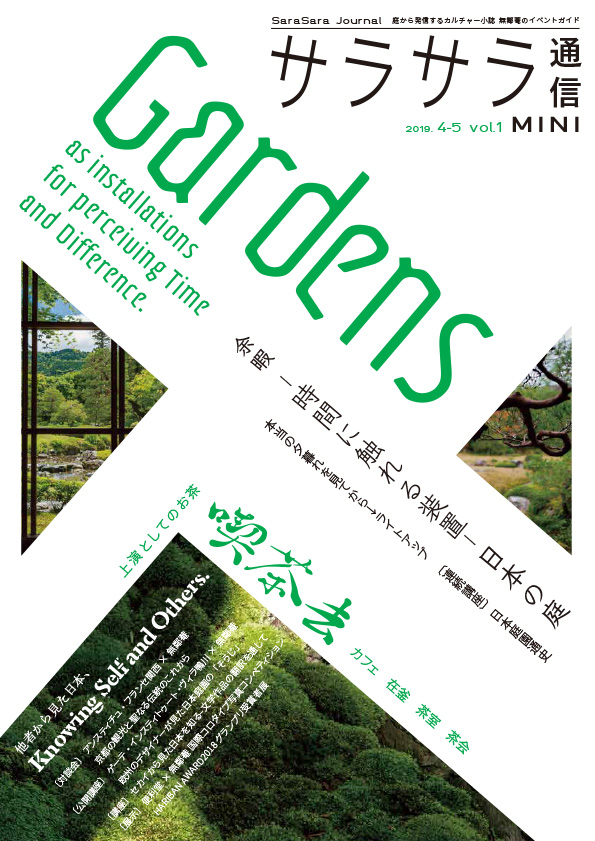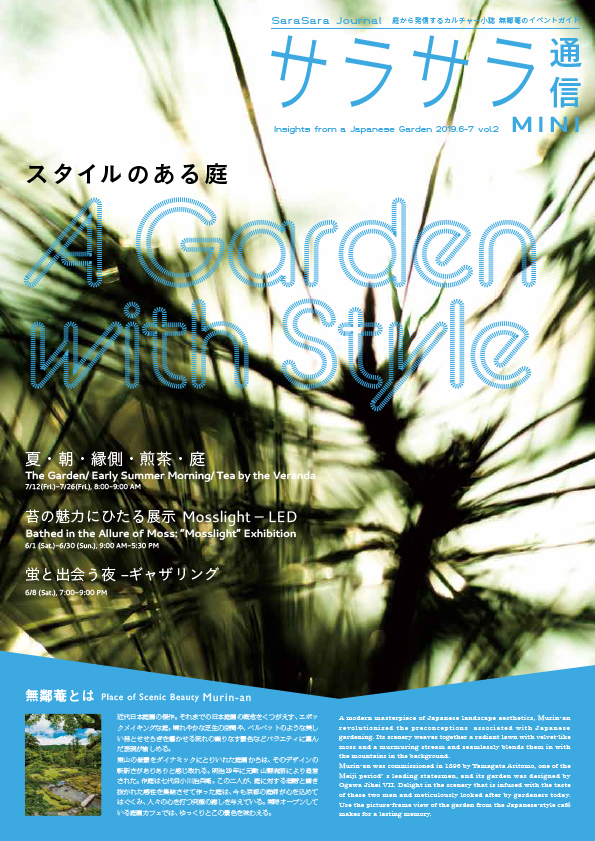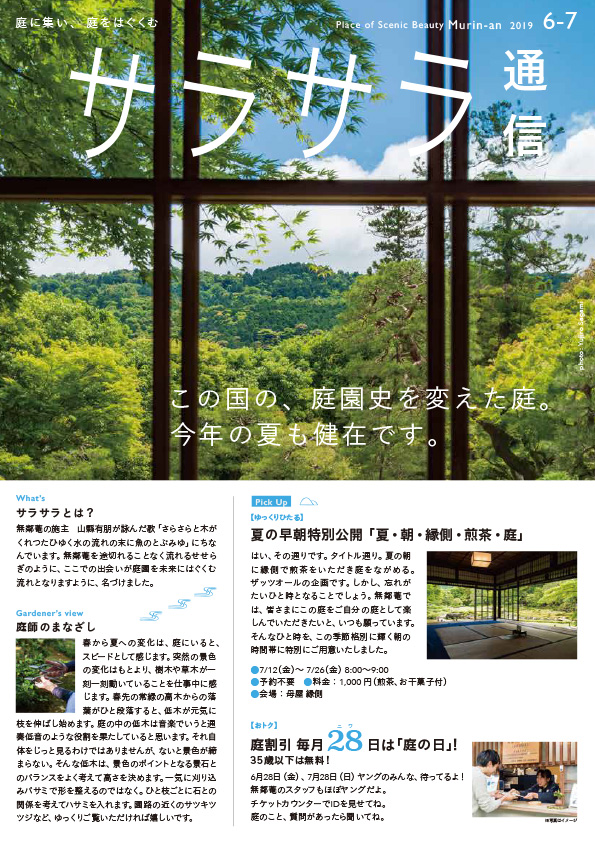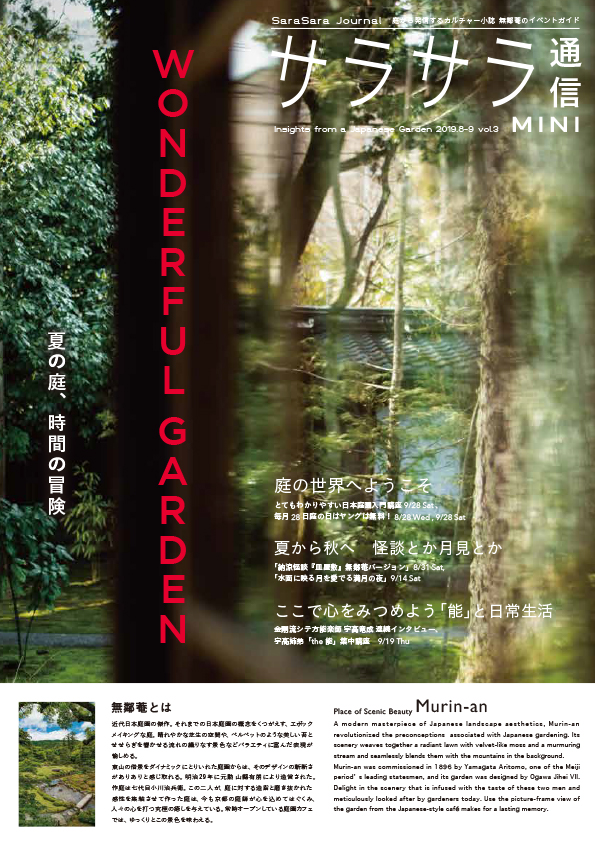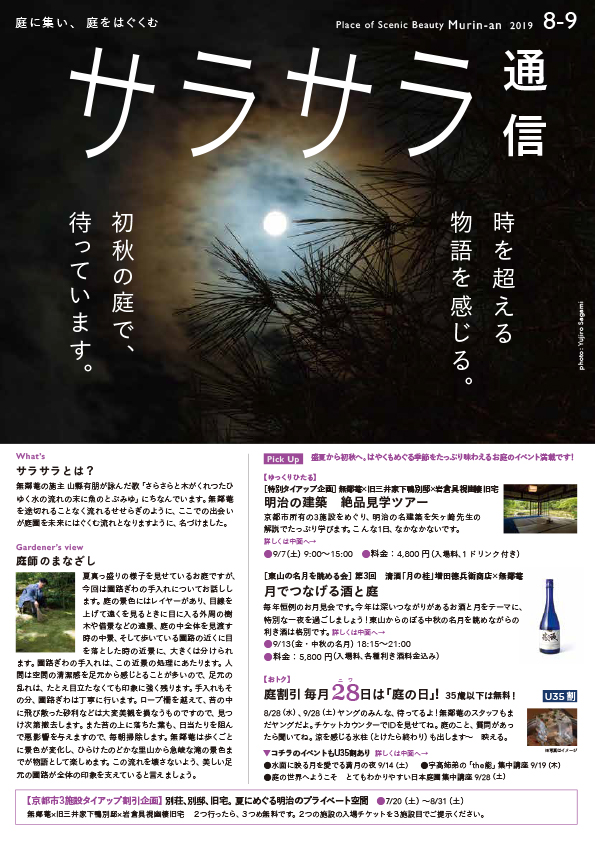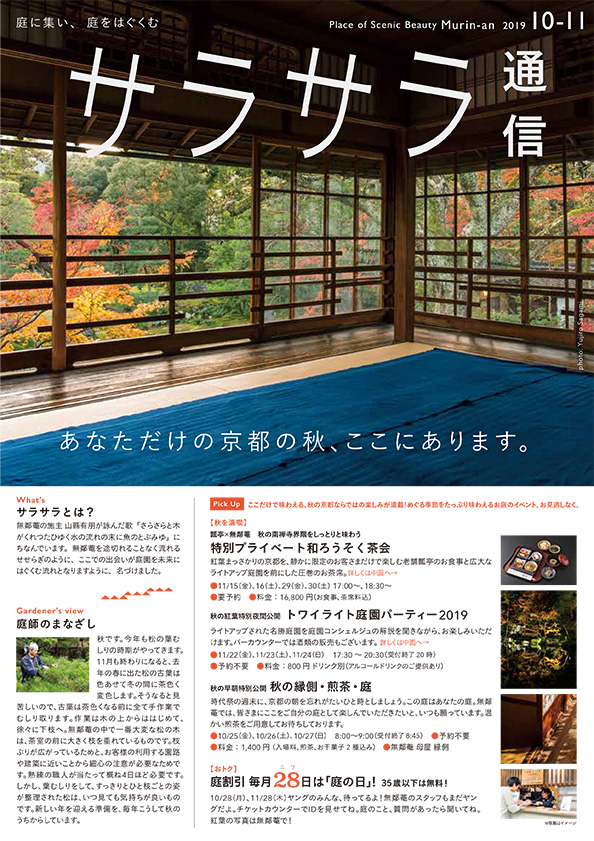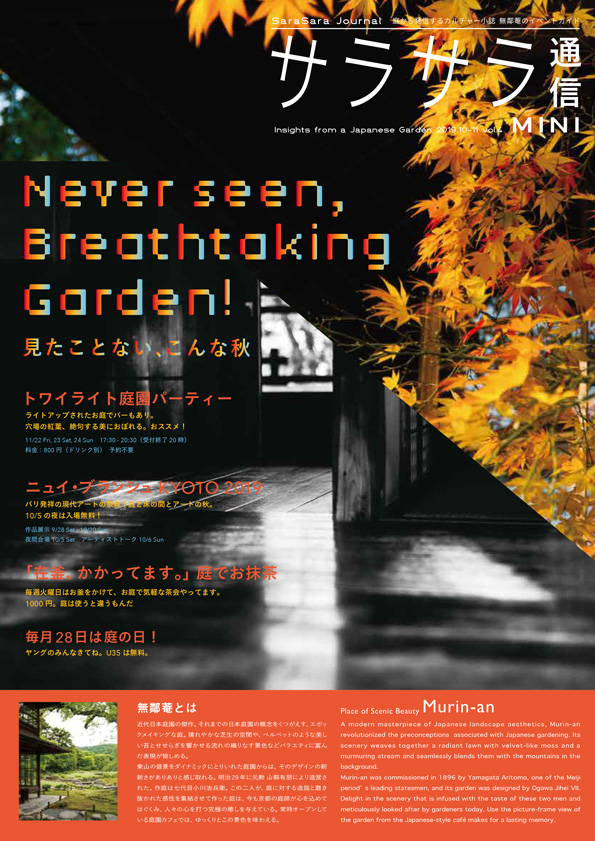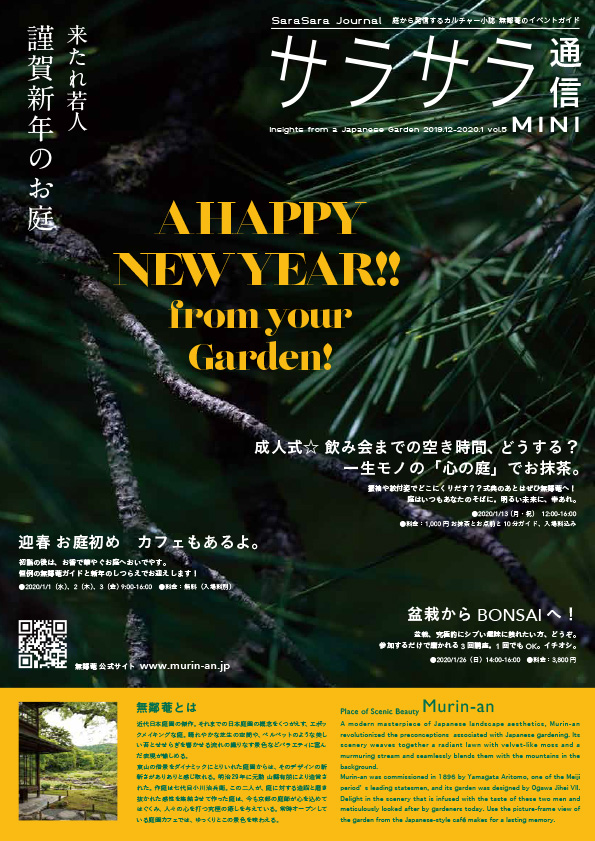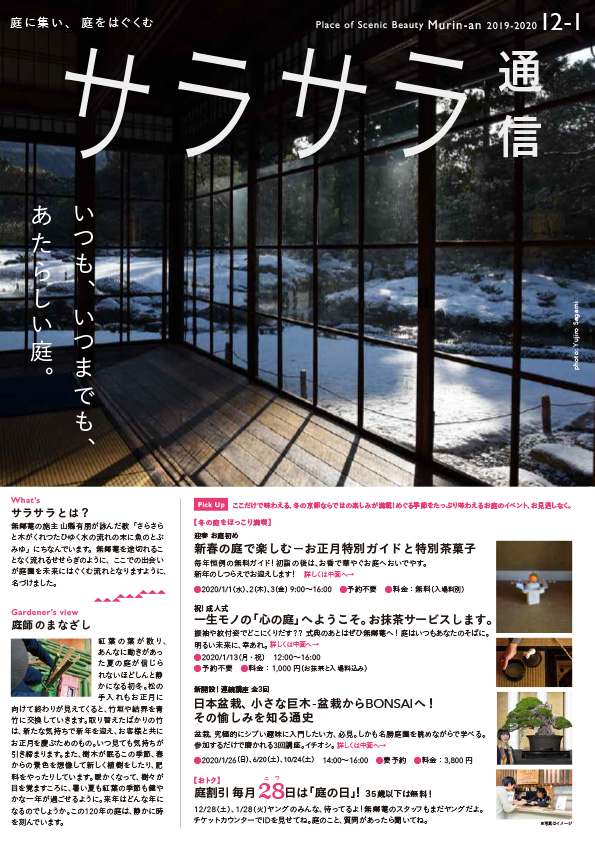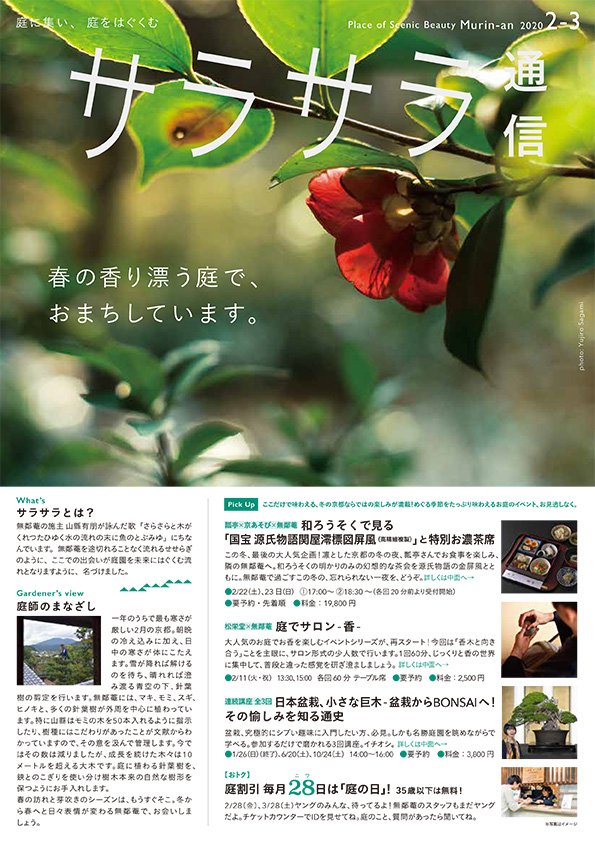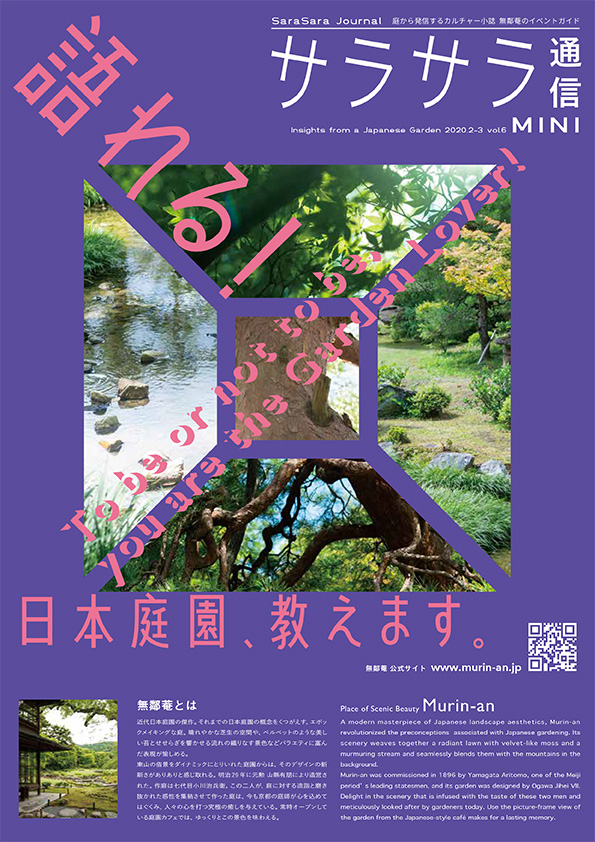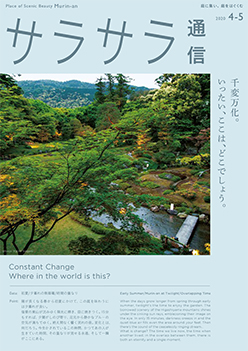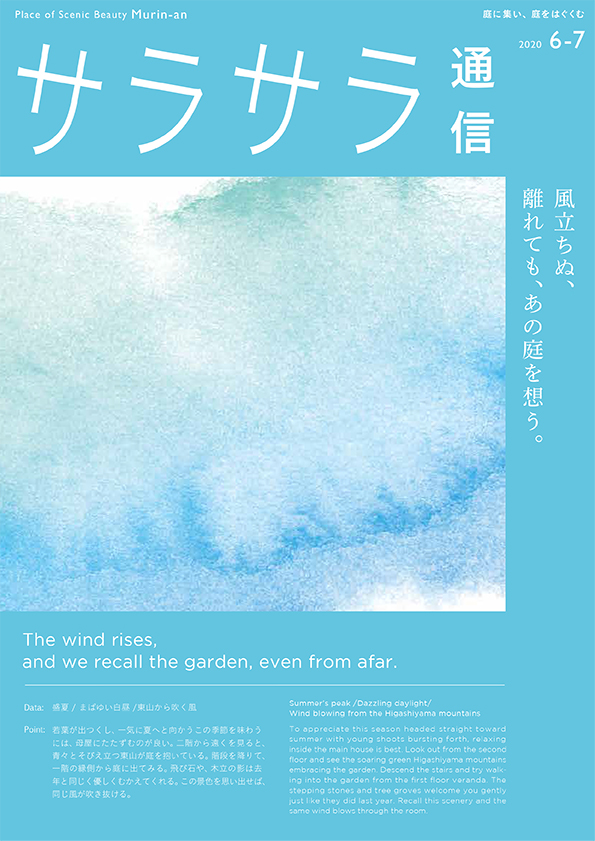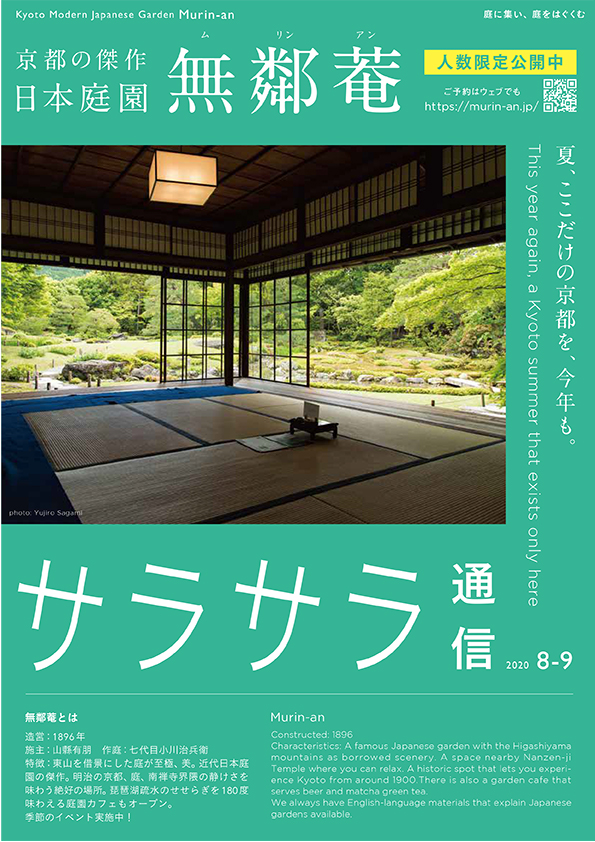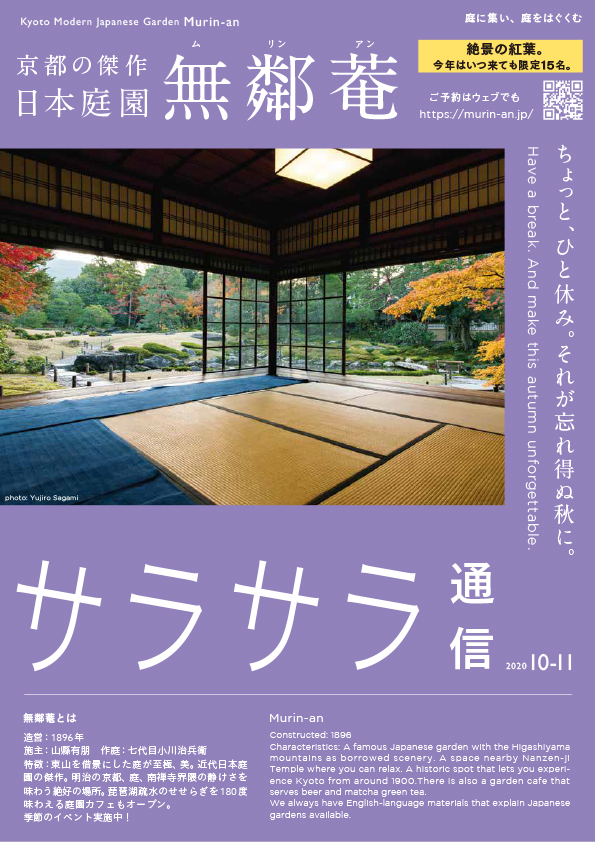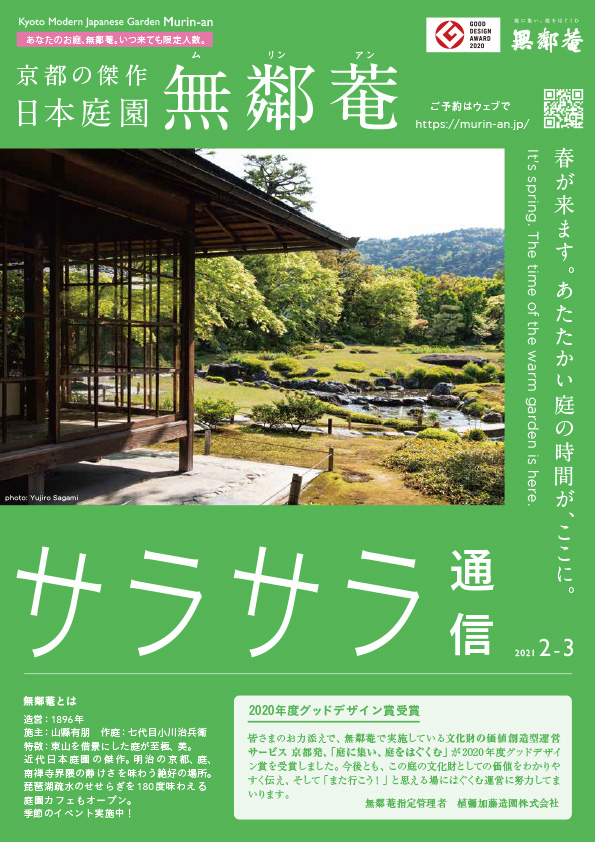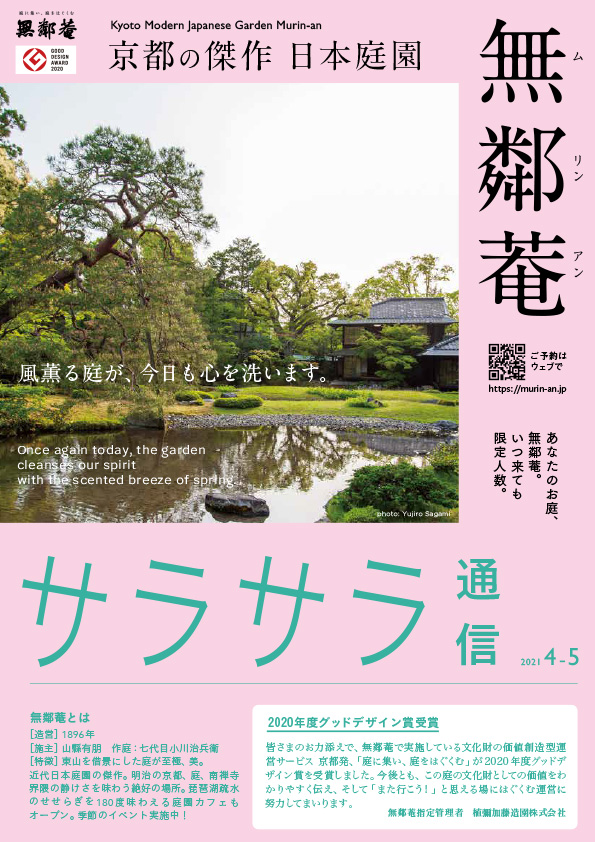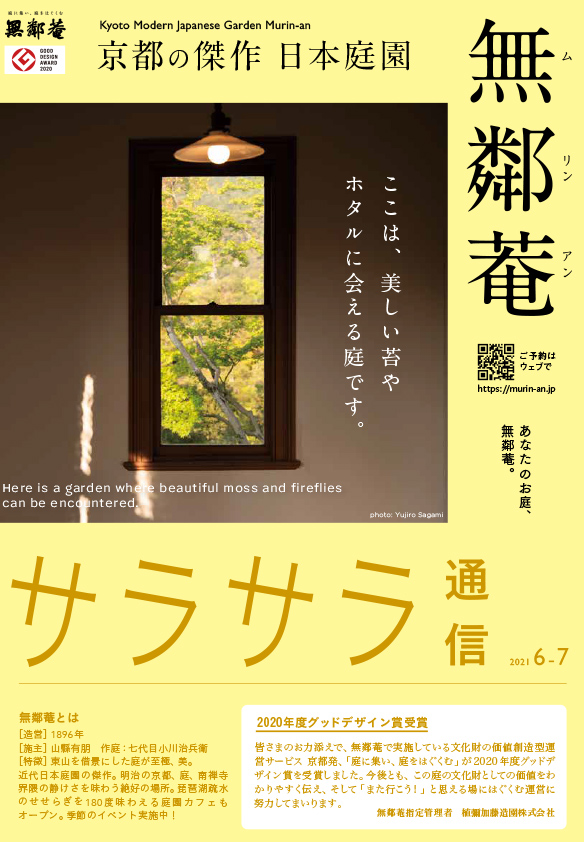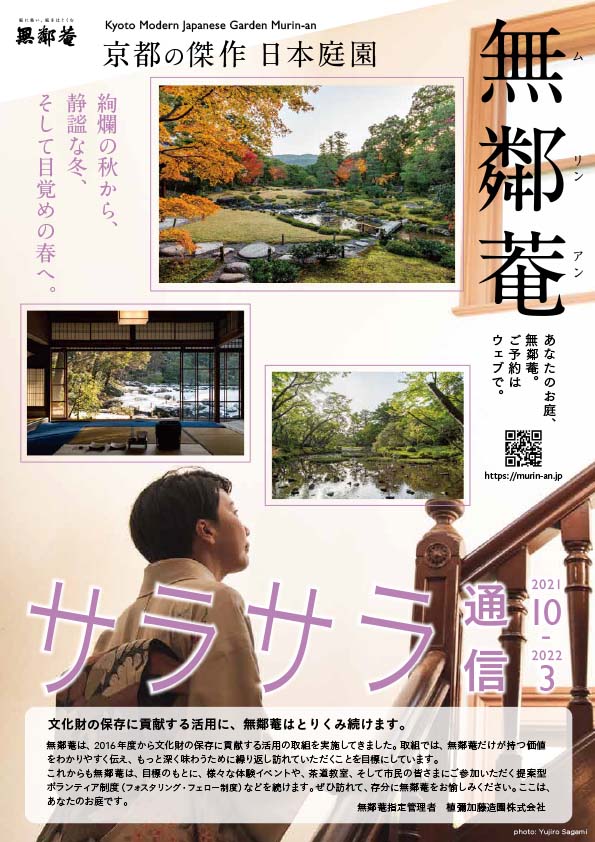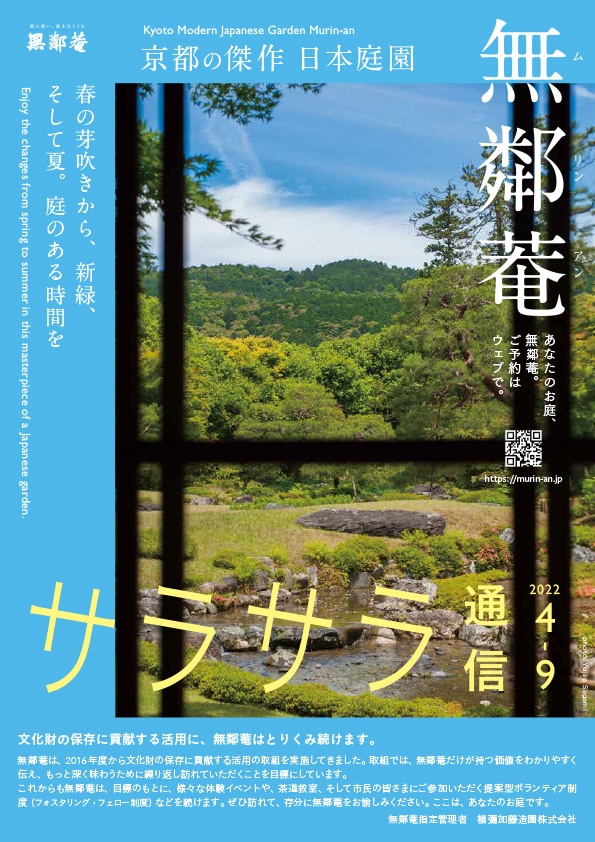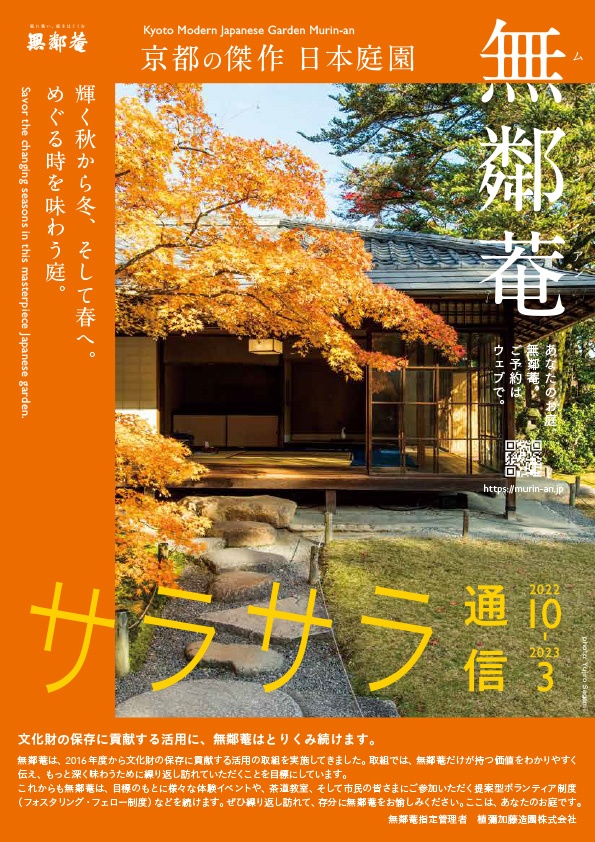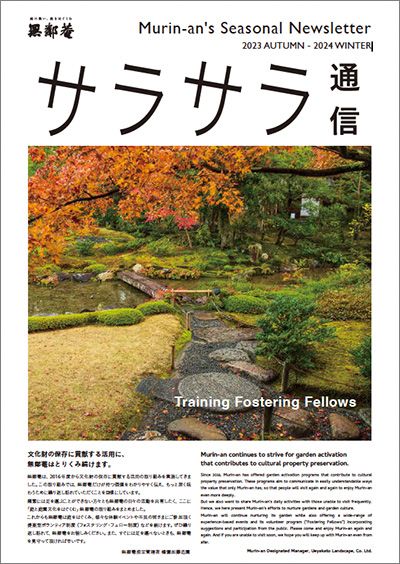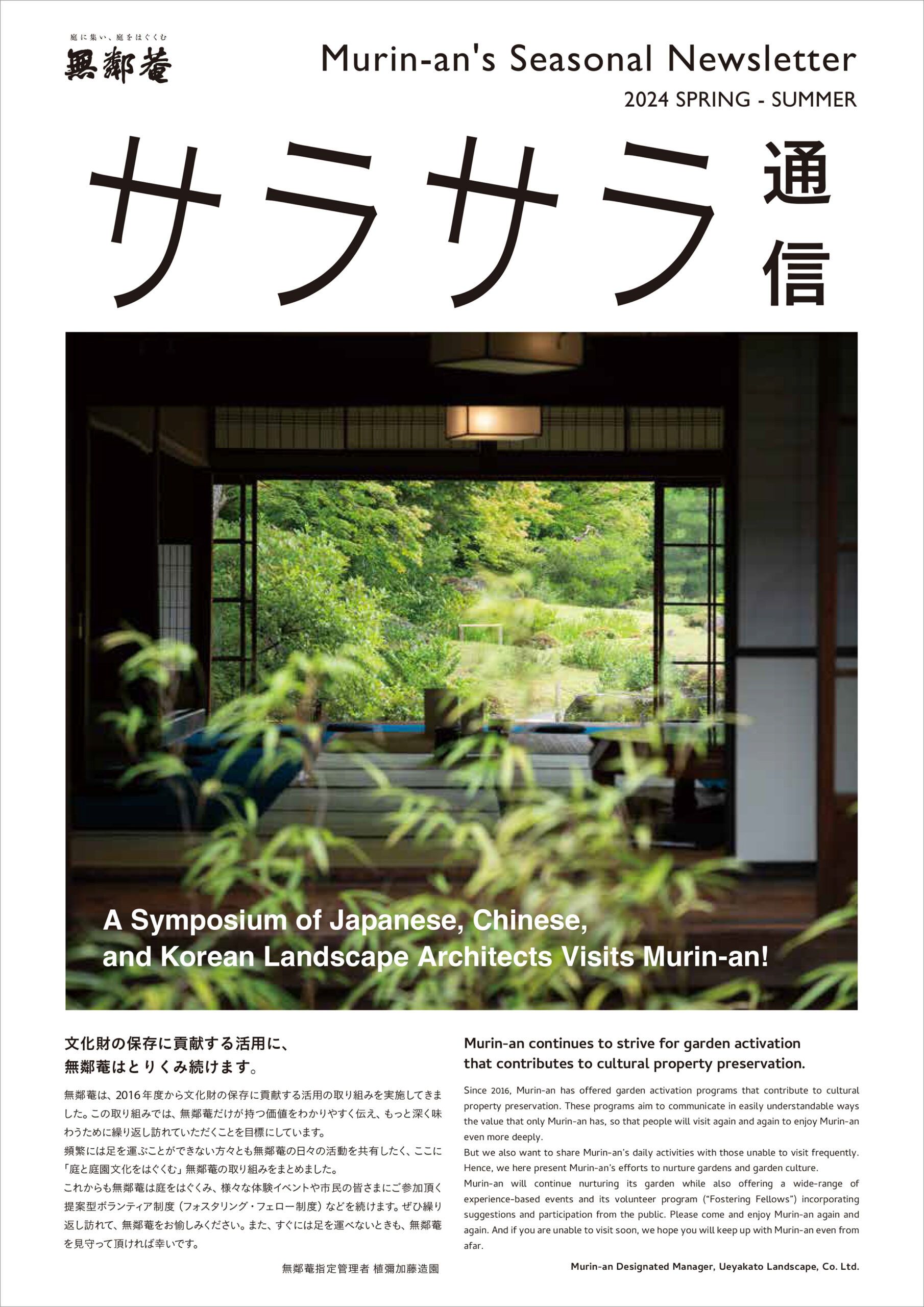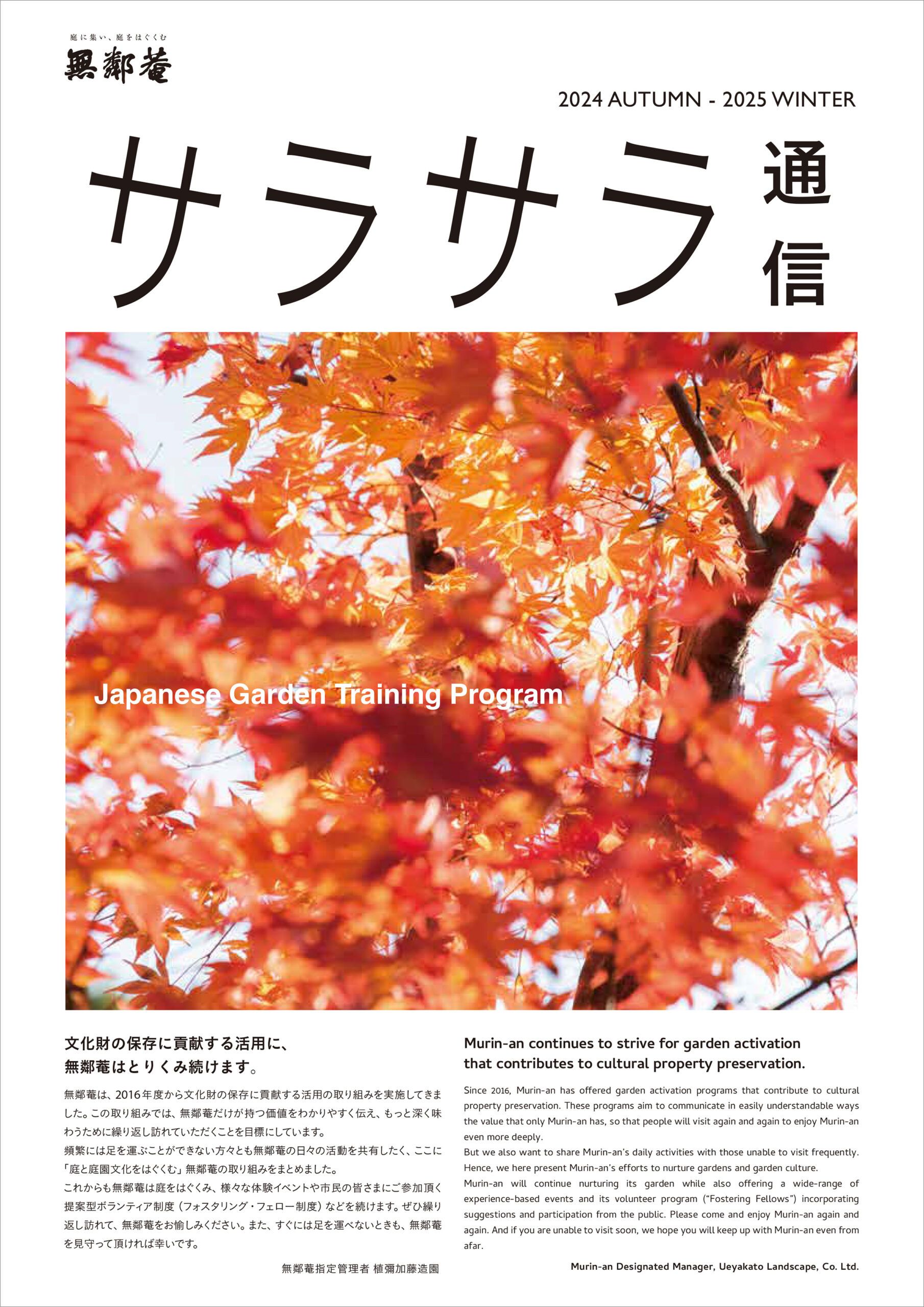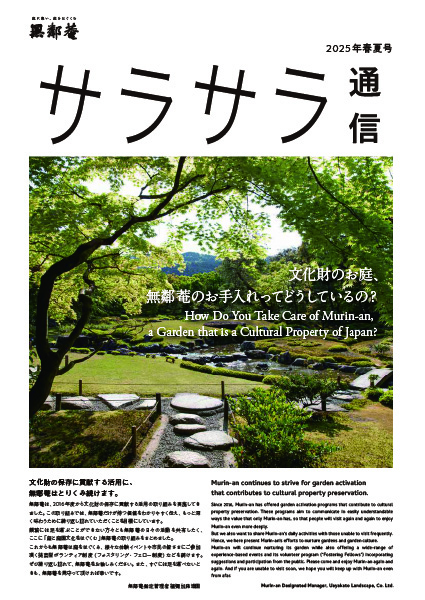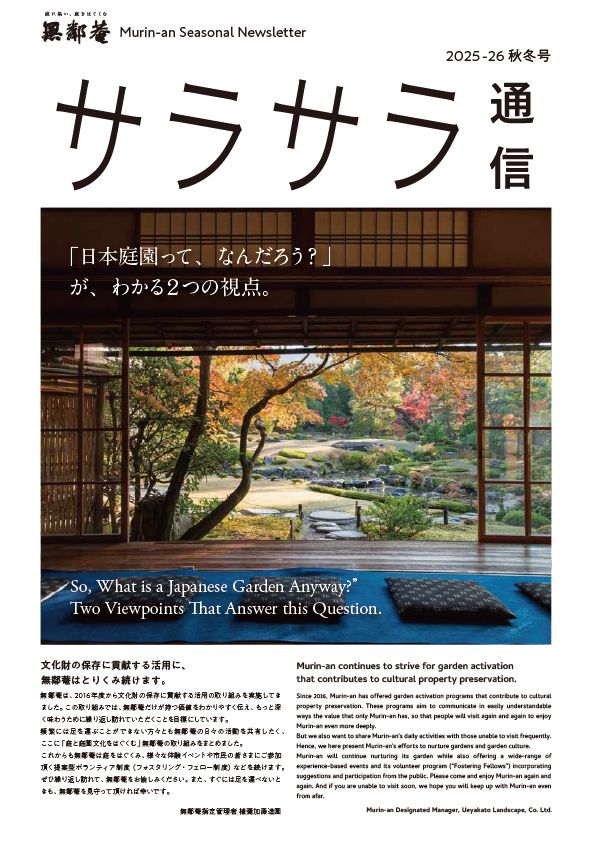Murin-an Periodical
This is the information program of Murin-an Garden.
It provides information on Japanese gardens, invitations to events that help foster the garden and seasonal highlights.
The name of this periodical is Sara-Sara News.
What does “sara-sara” mean? In Japanese, this word is used to evoke a gentle rustle or murmuring sound in nature. We have adopted it from a passage in a poem by Yamagata Aritomo, Murin-an’s original owner. It reads
At the end of a water stream/That murmurs gently as it travels hidden beneath the shade of trees/I see a fish leap
We chose this publication’s title to reflect our hope that, like the ceaseless flow of the murmuring brook flowing around Murin-an, the encounters here will produce a current toward nurturing Japanese gardens for the future.
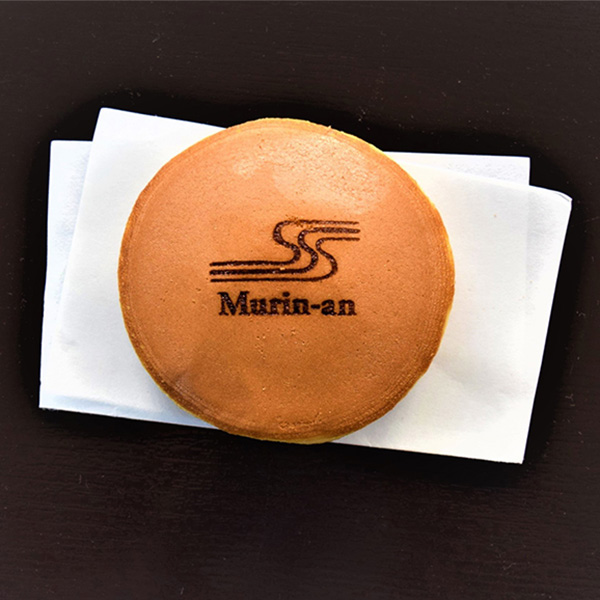
Until now, our visitors had been able to enjoy matcha tea in the main building, but as of this year we now have a full menu featuring coffee, roasted green tea, and Murin-an’s original brand of “dorayaki” red-bean pancakes. Enjoy spending some slow time just as you please in a space with a view of a Japanese garden masterpiece maintained in superior condition.
Our garden café is open all year round. Please come anytime to enjoy the changing seasons of the garden.
Click here for more information about the café.
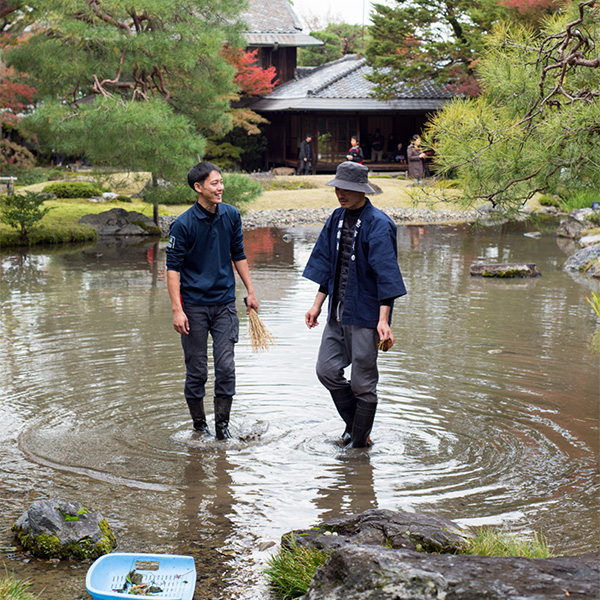
Gardener’s View
The garden in summer is filled with stilly lingering shadows that give it a beautiful look, but the living things inside the garden are as busy as ever. For this season, cleaning the stream is one of the most characteristic forms of care that we invest in the garden.
The stream that flows into Murin-an from the Lake Biwa Canal easily breeds algae, and is therefore cleaned around twice a week. This process is actually very important to producing the garden’s beauty. When you look at a Japanese garden, what strikes about the beauty of its water? In the case of the gardens of Japan’s Meiji period (1868-1912), the look of the stones at the bottom of the stream is what gives it its refreshingly cool look. Nothing could be more different from a pond whose bottom cannot be seen because it has become clouded over by algae and mud! Because cleaning the stream muddies the water that travels to the next garden, we are always sure to contact the neighboring restaurant Hyotei first. It’s a kind of interaction you only see in Kyoto.

